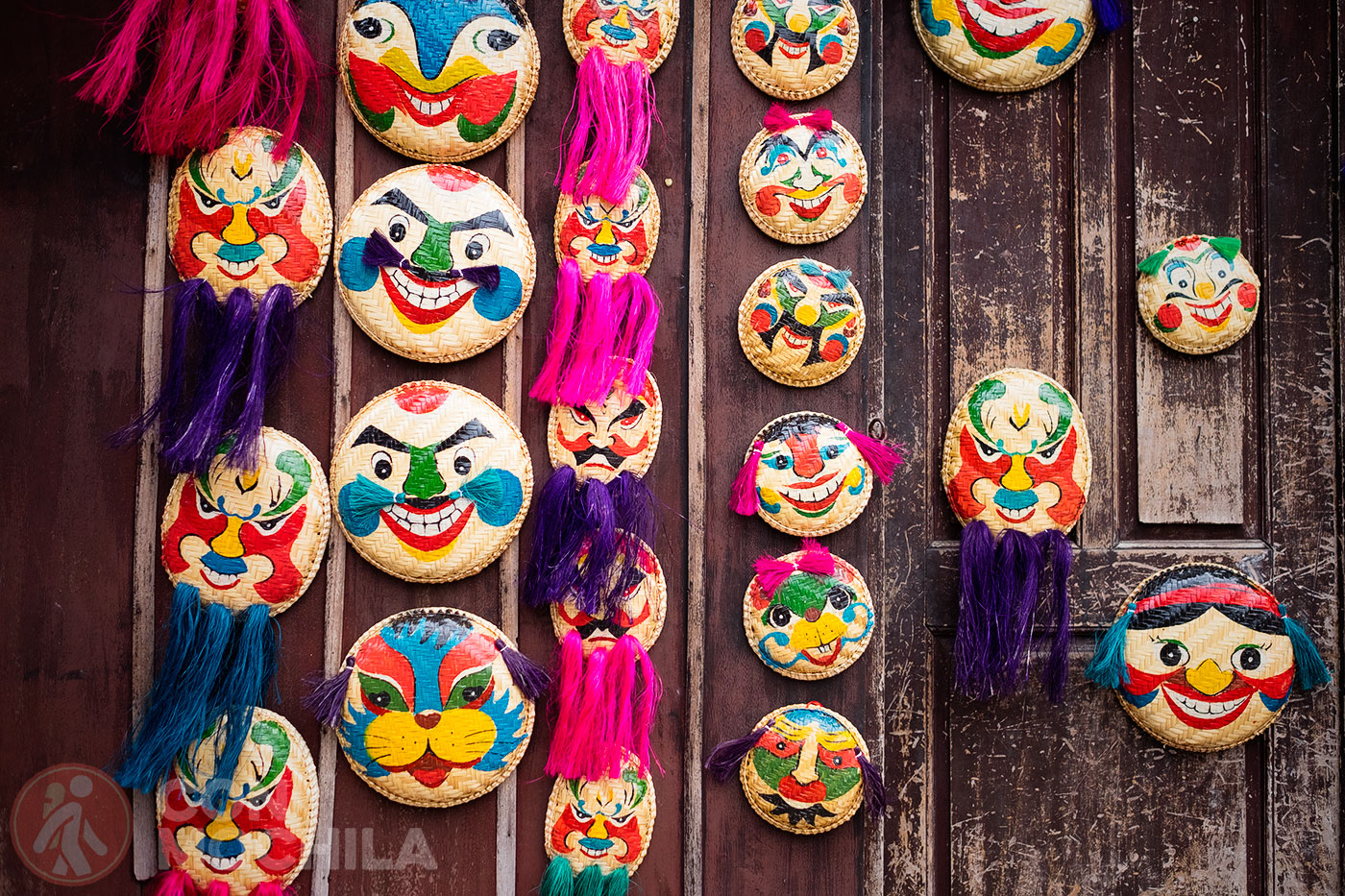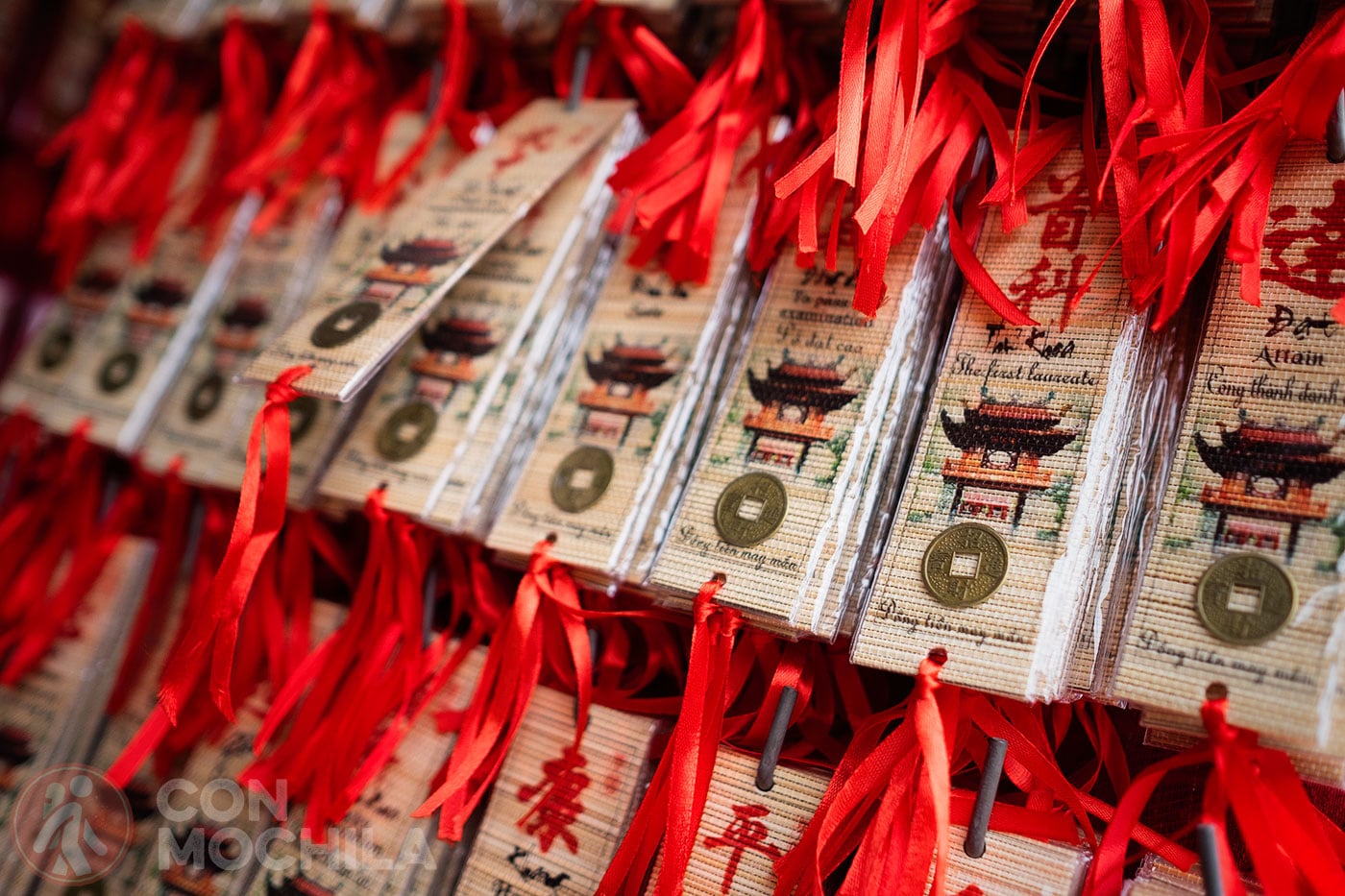One of the most visited and iconic landmarks in Hanoi is the Temple of Literature, located south of the Imperial Citadel of Thang Long. This historic site housed the Imperial Academy (Quốc Tử Giám), making it Vietnam’s first university.

The temple was originally built in October 1070 by King Lý Thánh Tông in honor of Confucius. It was later rebuilt during the Trần Dynasty and restored by subsequent dynasties. Despite wars and natural disasters, the temple has preserved the architectural styles of various dynasties and holds many valuable relics.
Some of the most significant restorations of this Hanoi landmark took place in 1920, 1954, and 2000.
If you’re visiting on your own, simply take a taxi to the site. Alternatively, you can join a private tour of Hanoi, who will take you to this temple and other highlights of Vietnam’s capital.
Initially built to worship Confucian sages and saints, the Temple of Literature was transformed into an imperial academy in 1076, just six years after its construction.
At first, only princes and members of the royal family could study there. However, over time, the academy opened its doors to the most outstanding scholars in the country.
Graduating from this academy was a rare achievement—only 2,313 students completed their studies over a span of 700 years. Those who succeeded had their names engraved on stone steles inside the temple. Today, 82 of the original 116 steles remain.
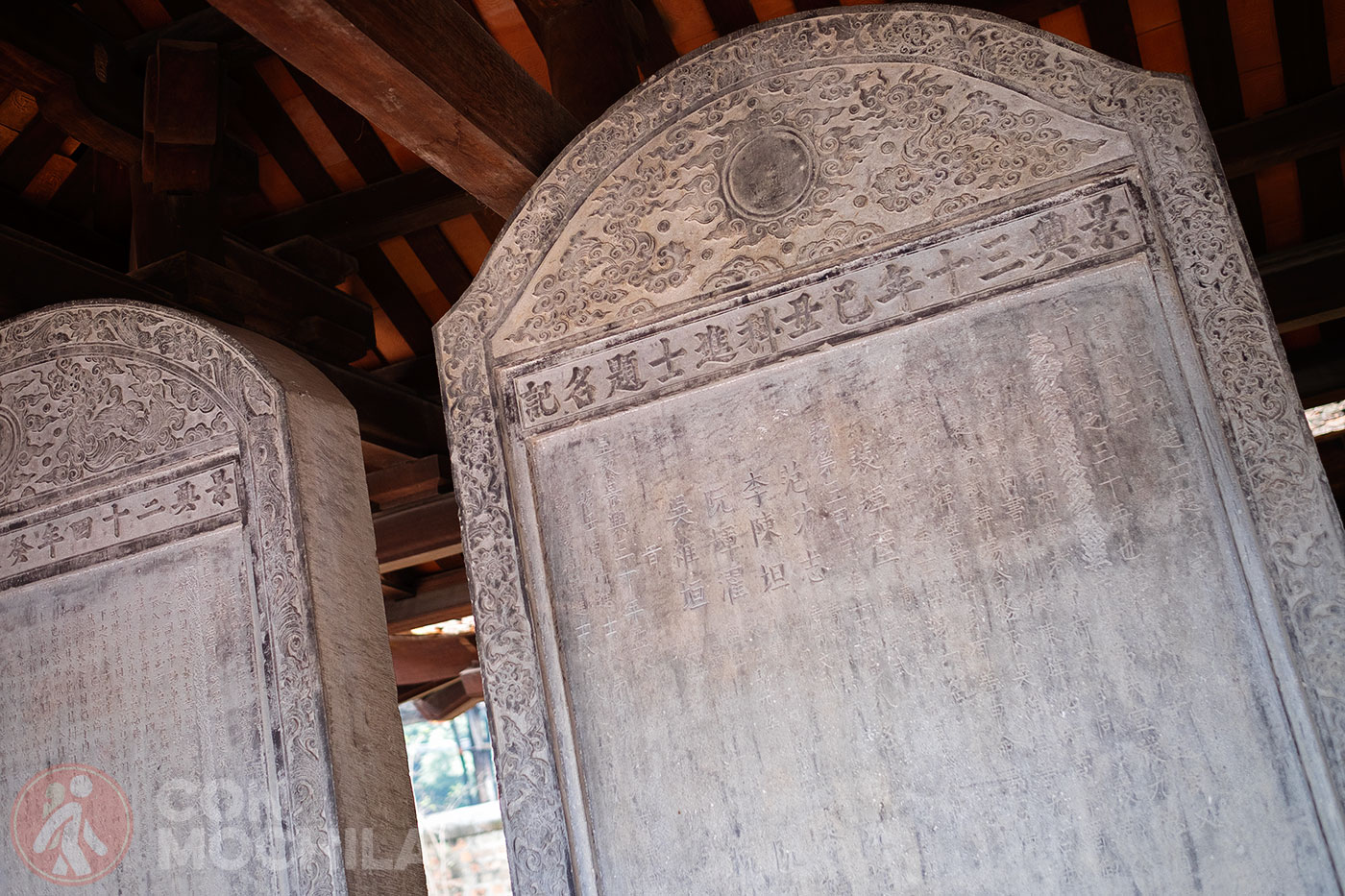
These steles rest on stone turtles, but their condition has deteriorated over time. In Vietnamese culture, touching the turtle’s head is believed to bring good luck.
The Temple of Literature is entered through three gates, with the central gate reserved for the monarch. Above the main entrance, a bronze bell was used to announce the arrival of an important figure. It could only be rung by monks.
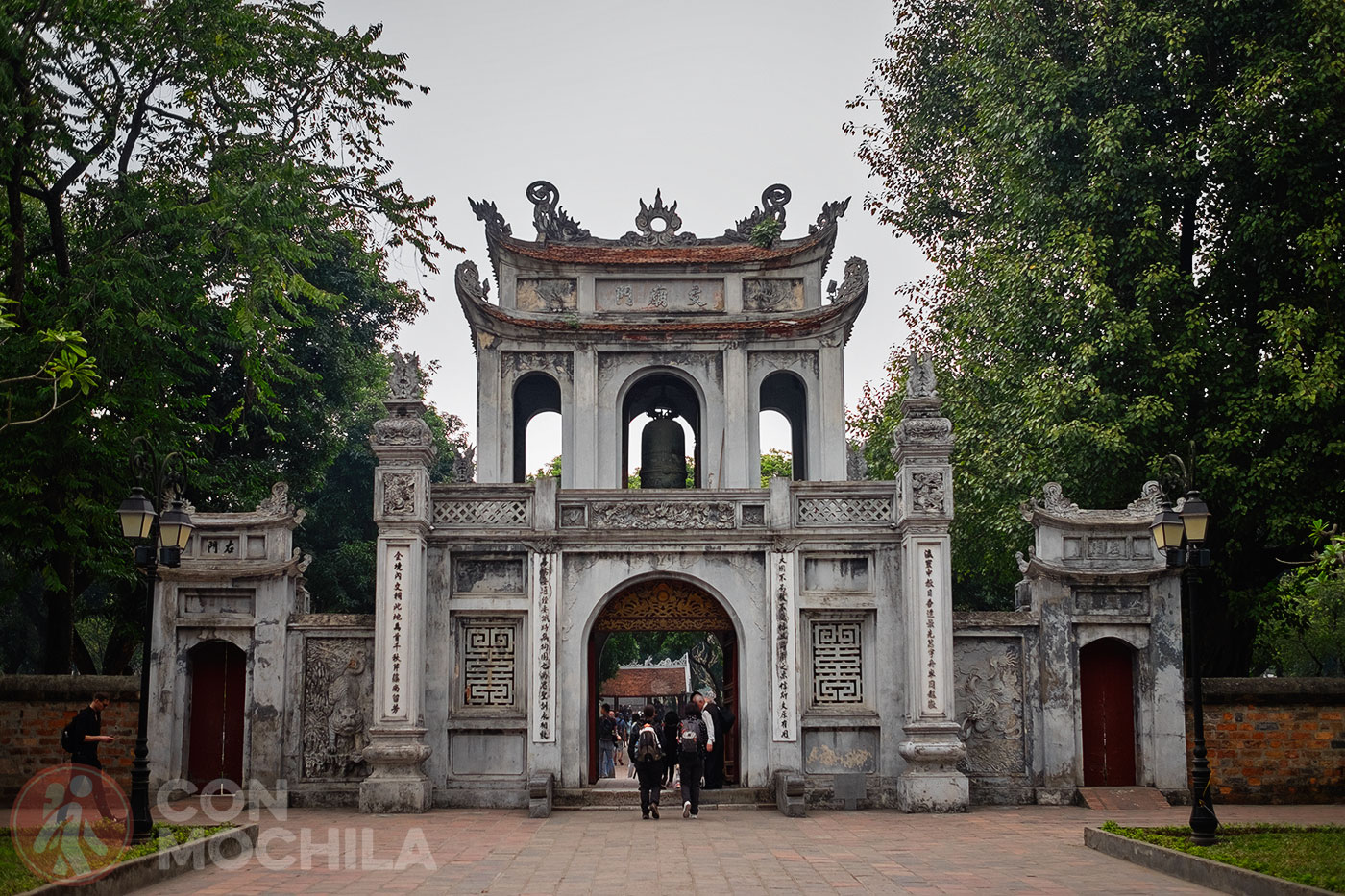
The two side gates were designated for administrative and military personnel. Inside, the temple is divided into five courtyards, the first two being peaceful areas with ancient trees and manicured lawns, where scholars could relax, away from the noise of the outside world.
The first courtyard extends from the main entrance to Dai Trung Gate, which is flanked by two smaller gates: Dai Tai Gate (Đại Tài Môn) and Thanh Duc Gate (Thành Đức Môn).
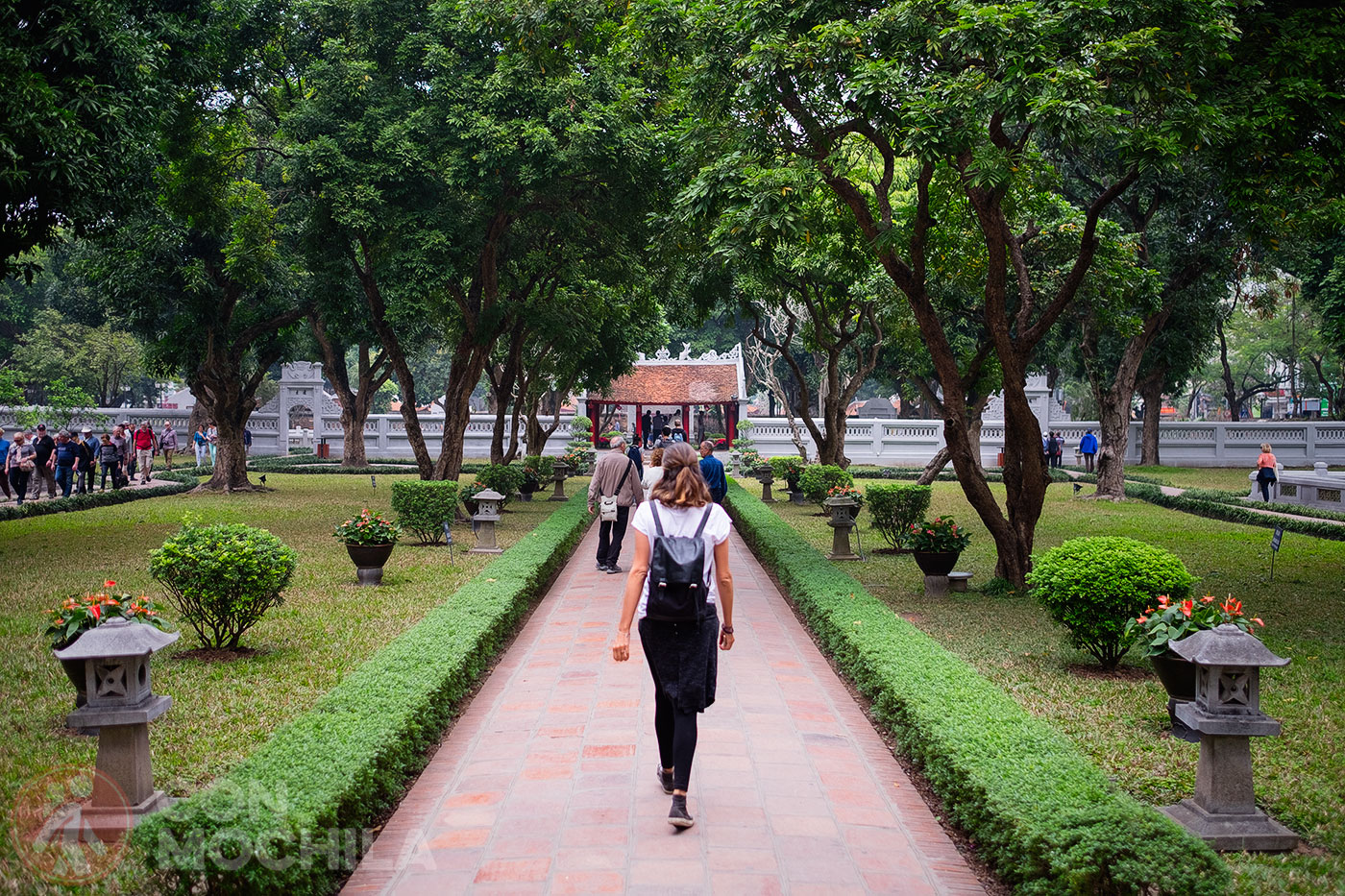
The second courtyard features the Khue Van Cac Pavilion, built on four engraved white stone pillars. The upper section is painted red, with two circular windows and an intricately designed roof. If you look closely, you’ll recognize this pavilion’s symbol on street signs throughout Hanoi.
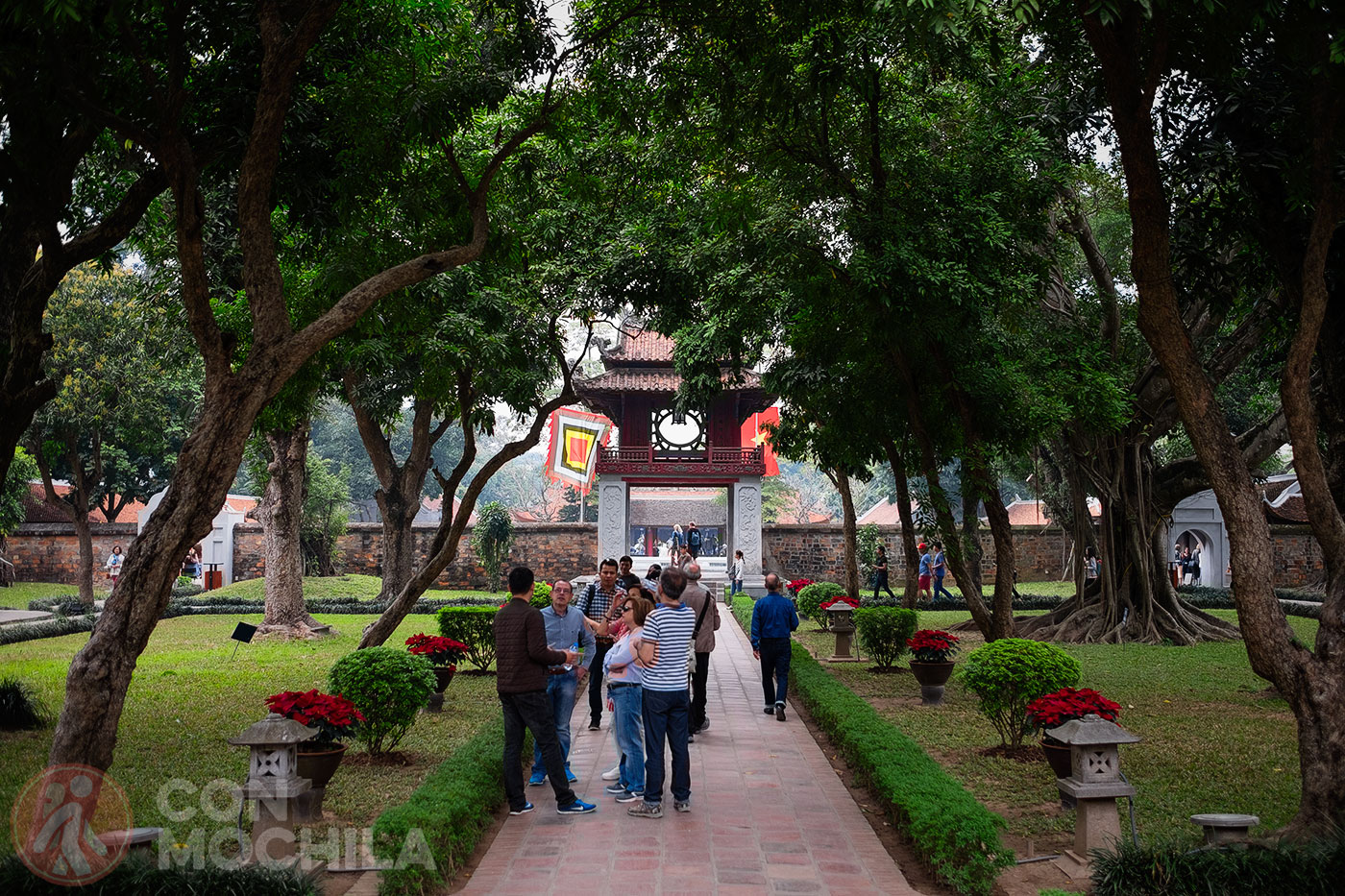
The third courtyard houses the Thien Quang Well (Thiên Quang Tỉnh) and the temple’s treasures, kept in two large halls on either side. This courtyard is accessed through the Khue Van Pavilion.
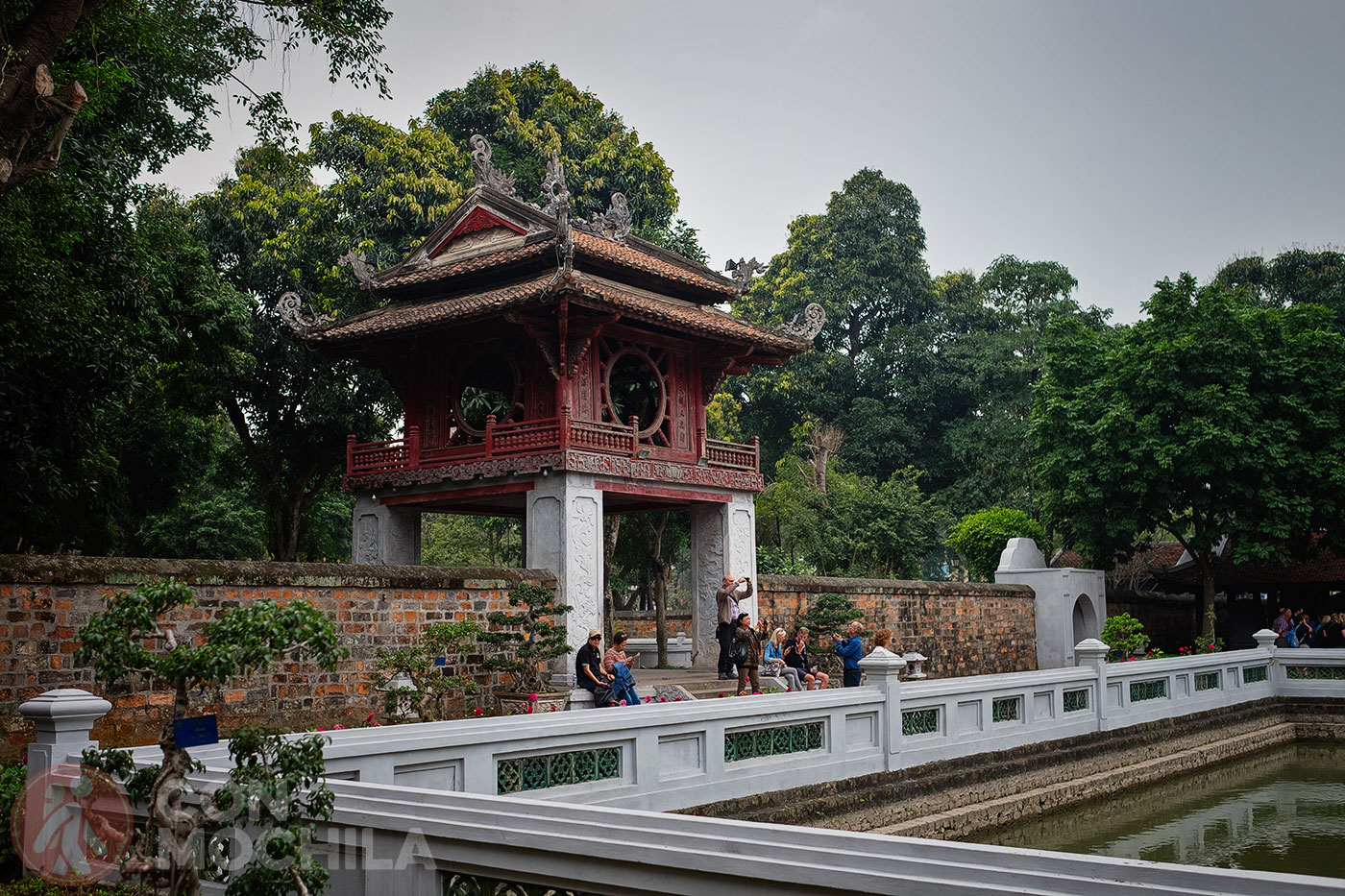
Entering through the Dai Thanh Gate (Đại Thành Môn), the fourth courtyard contains two side halls dedicated to Confucius, his 72 honored disciples, and Chu Van An, a renowned teacher known for his dedication to education.
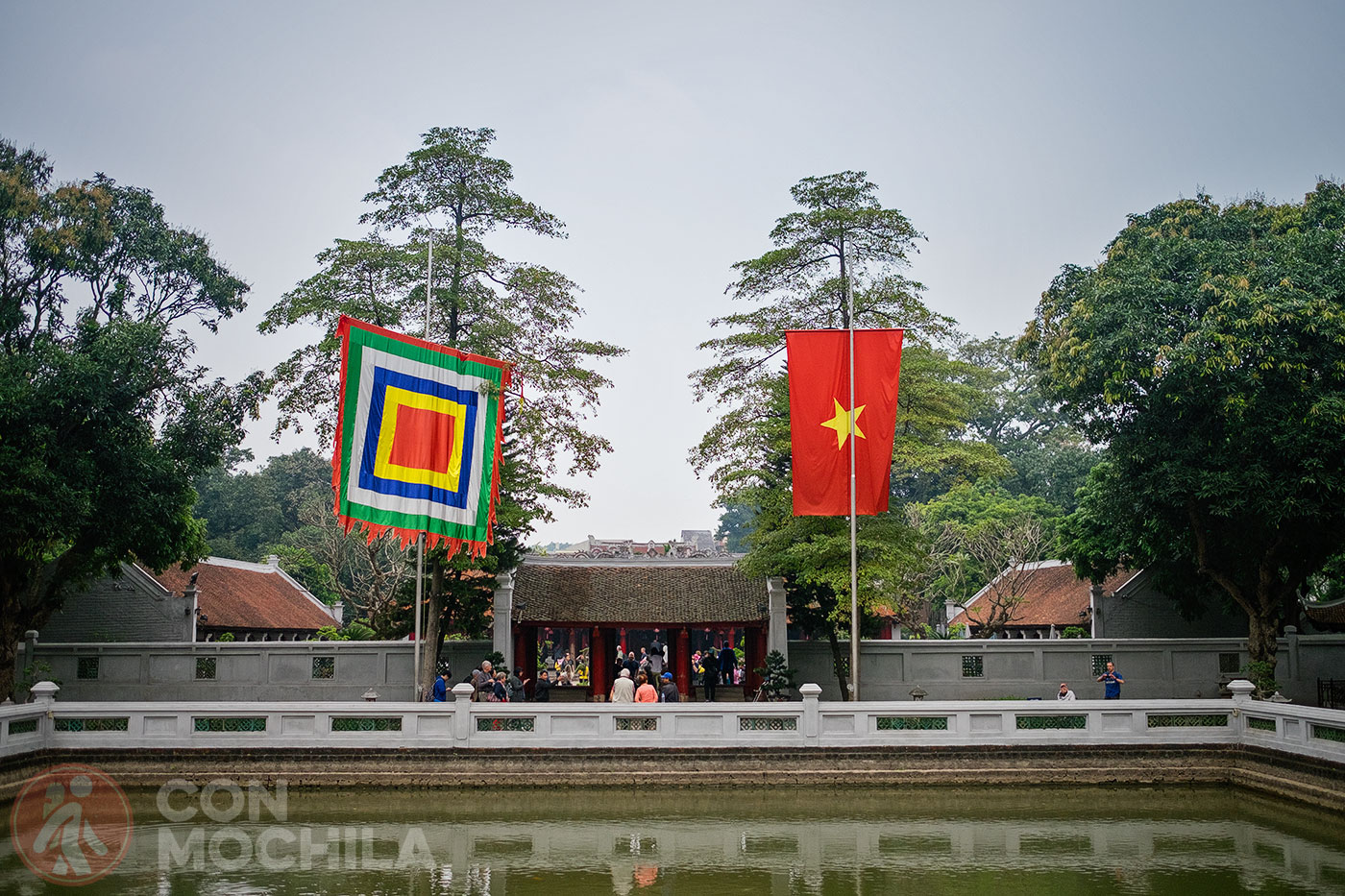
At the center stands the House of Ceremonies (Đại Bái Đường) and the Thượng Điện, where Confucius and his four closest disciples are worshiped.
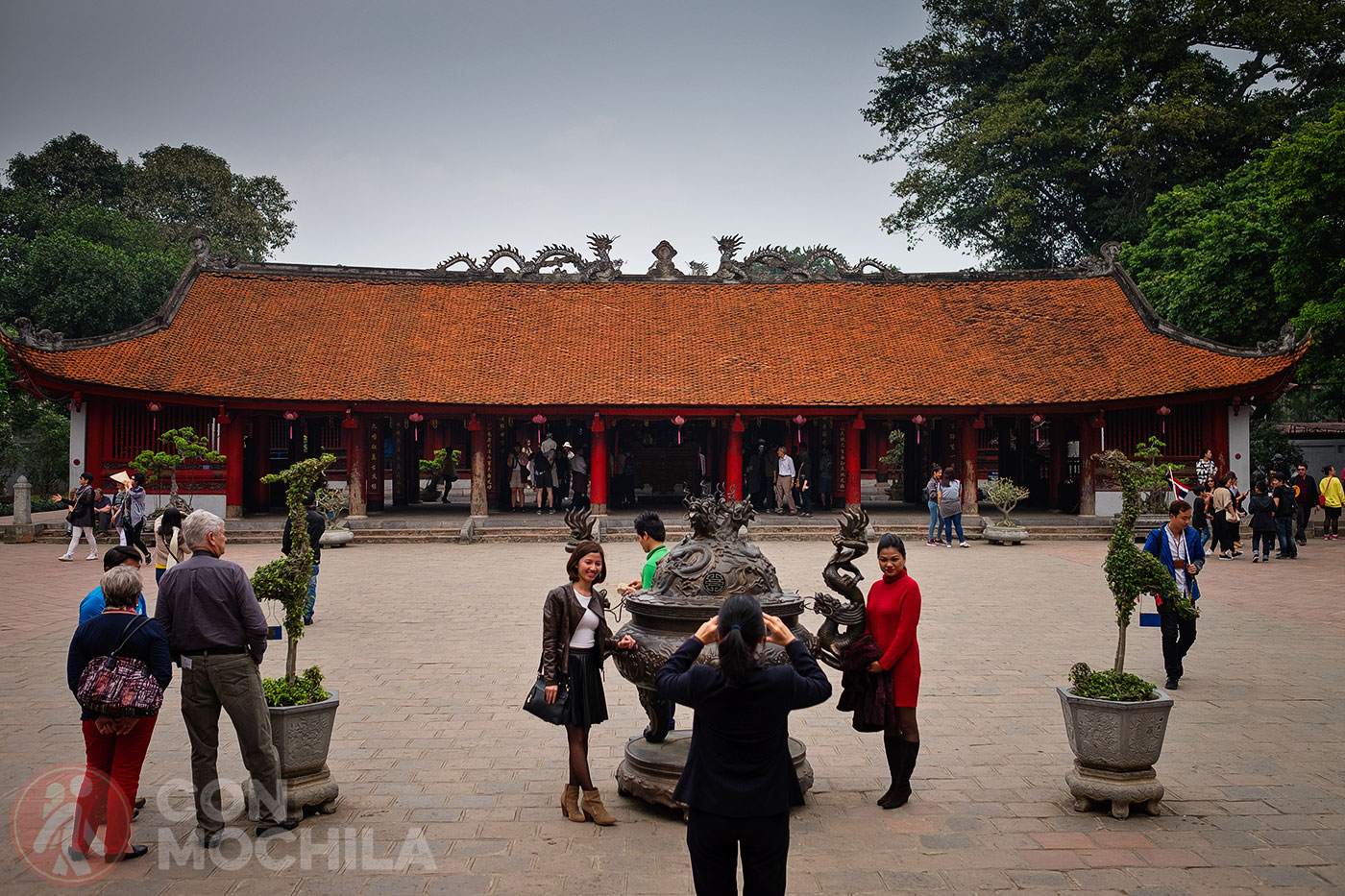
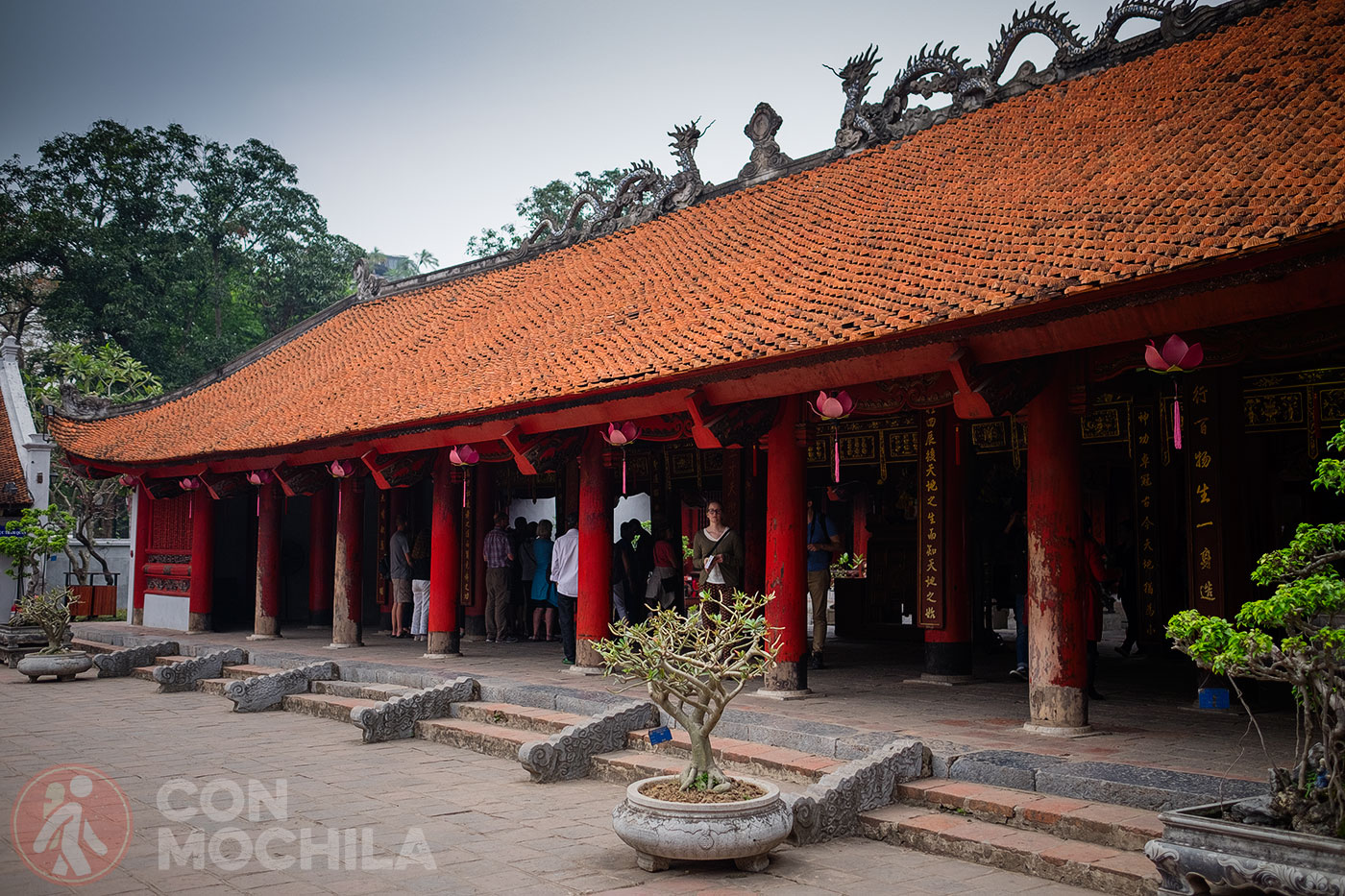
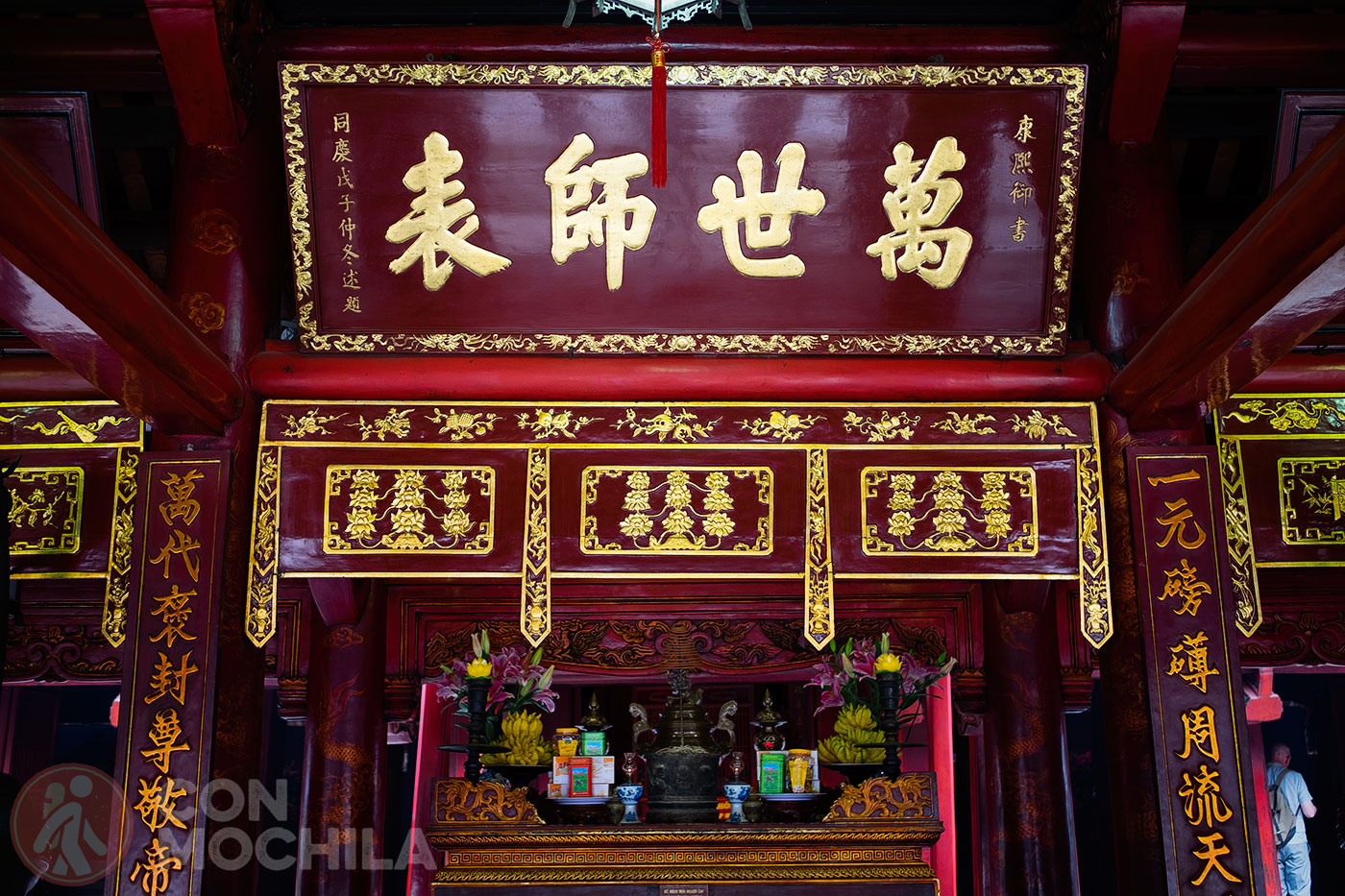
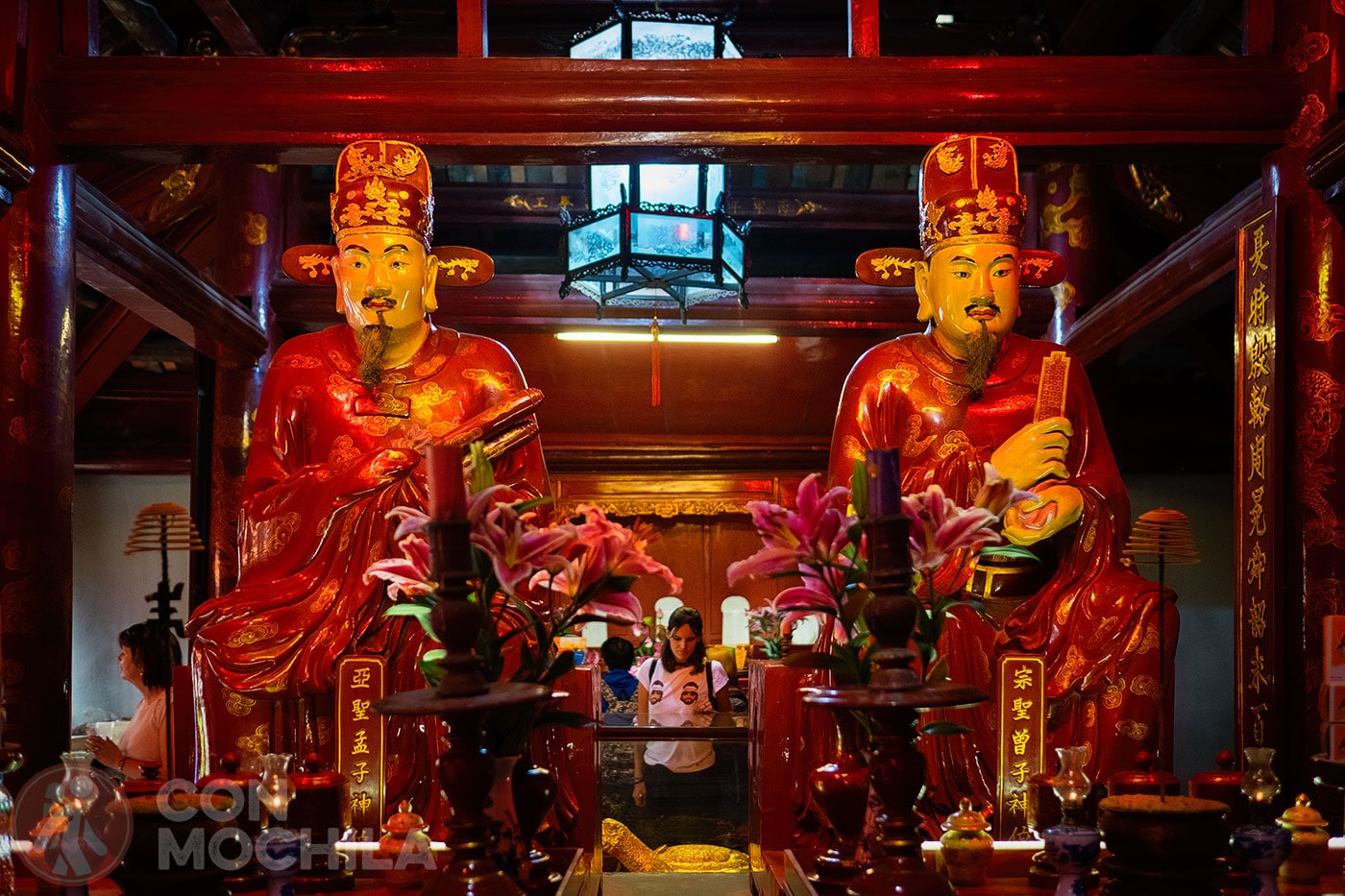
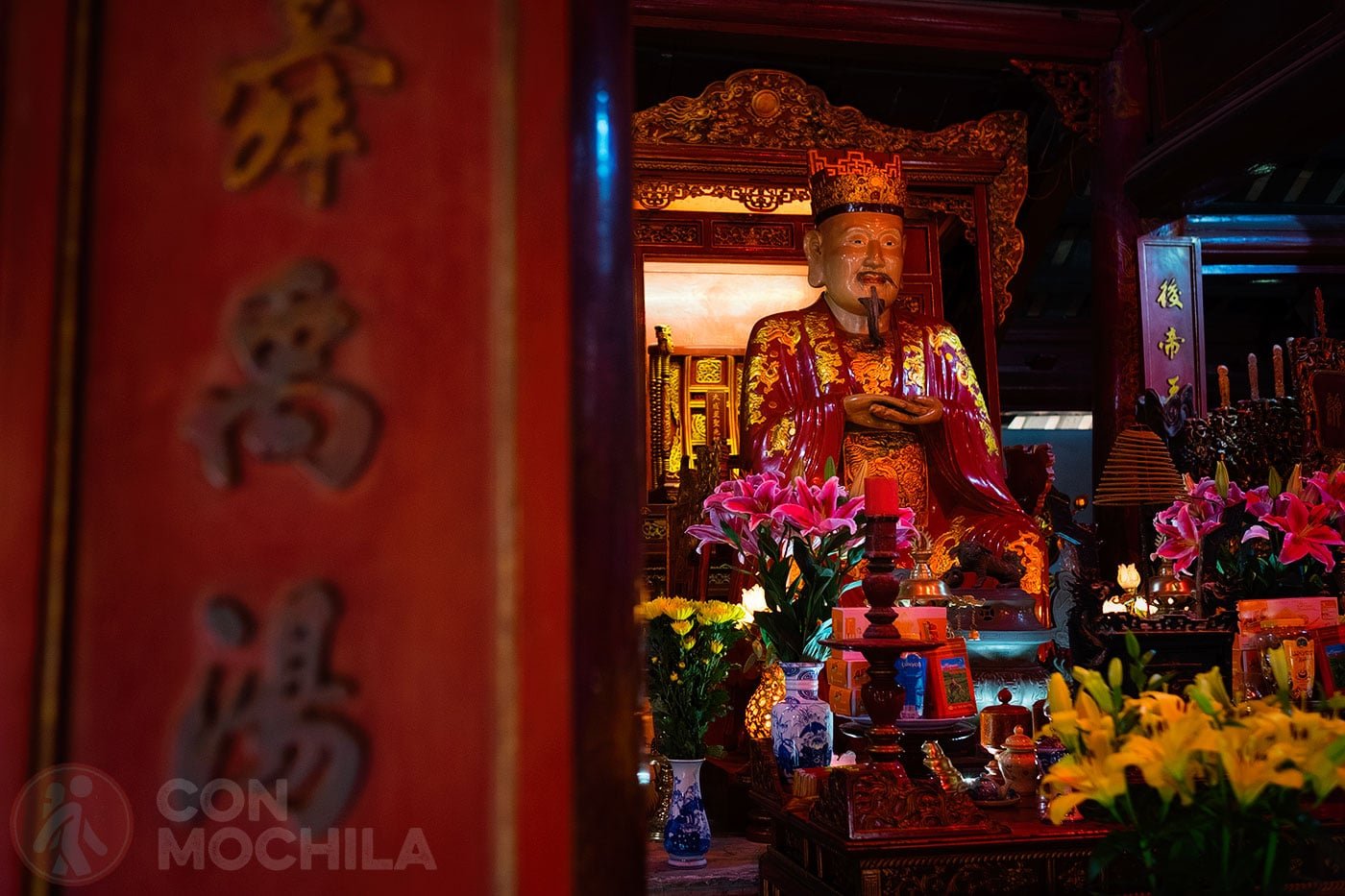
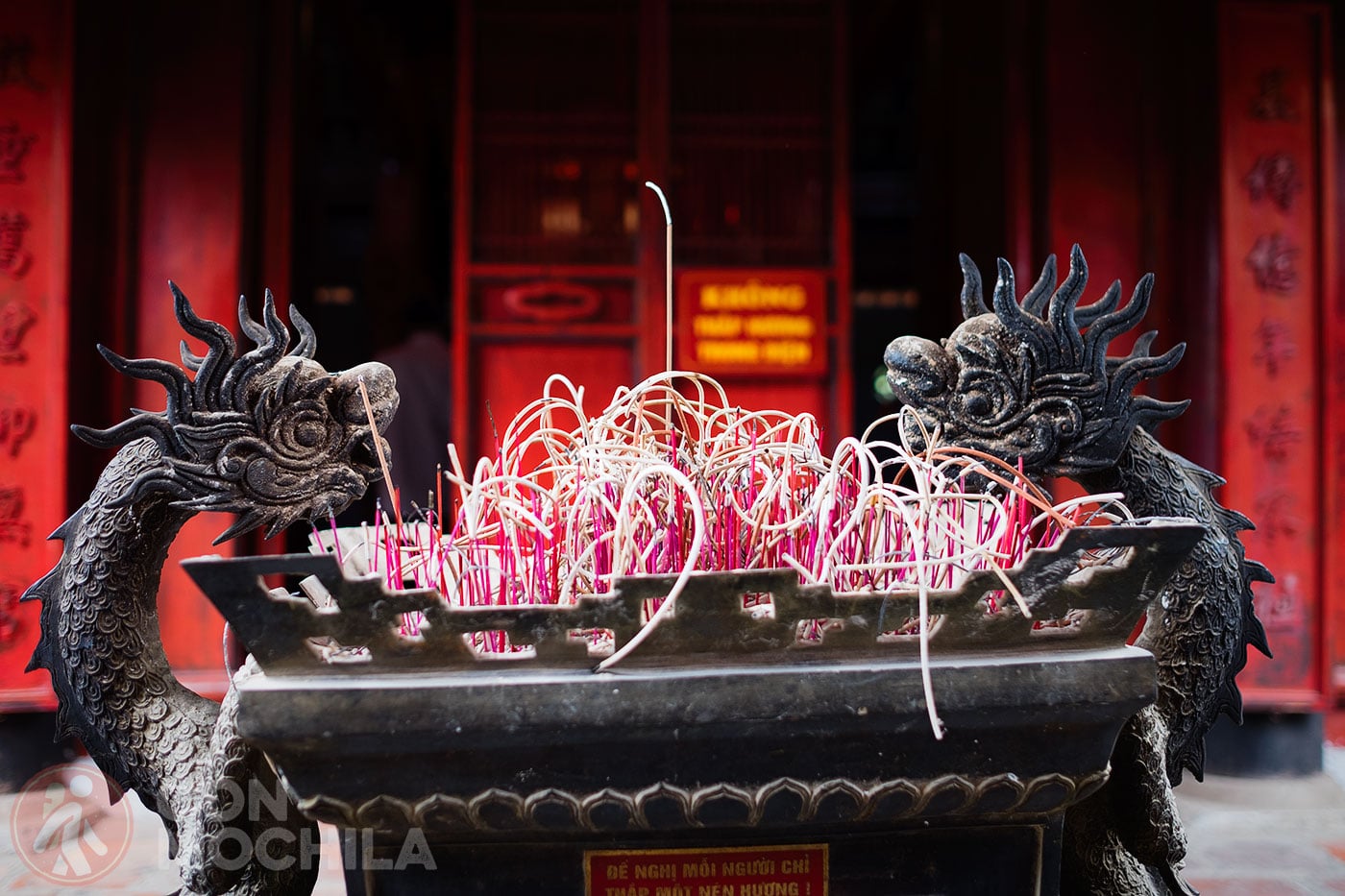
The last and most distant courtyard is where Emperor Ly Nhan Tong ordered the construction of the Imperial Academy. Over the years, under different dynasties, it underwent several name changes until, during the Lê Dynasty, it was officially named Thái Học Viện and expanded with the addition of Minh Luân House, halls, warehouses, and dormitories.
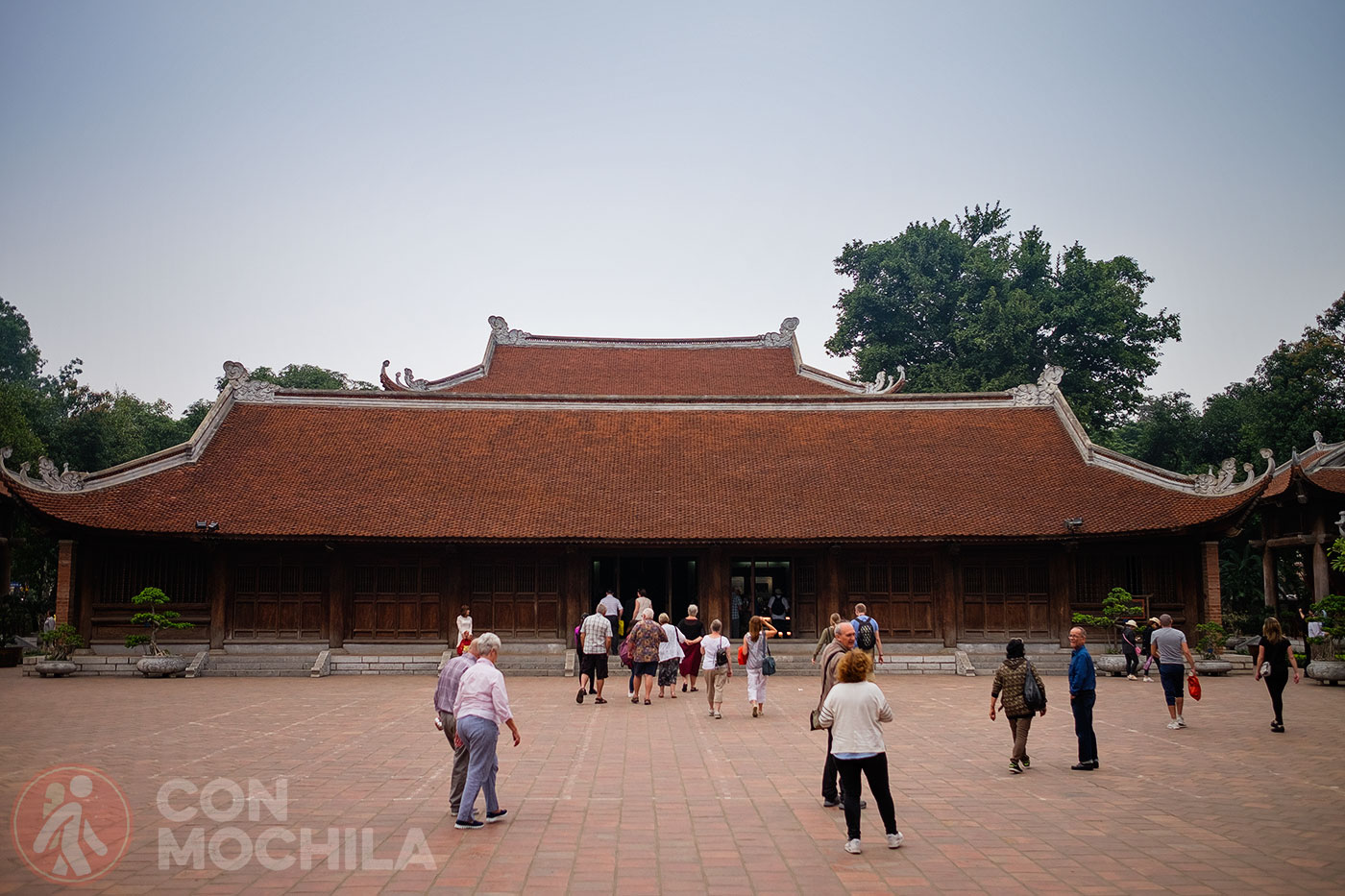
In 2000, the fifth courtyard was completely restored following its original design, which had been destroyed by the French in 1946. The restored Imperial Academy now consists of two main buildings (front and rear), two side buildings, and several additional structures, occupying approximately 1,500 m². The front building is often used for scientific activities and cultural events.
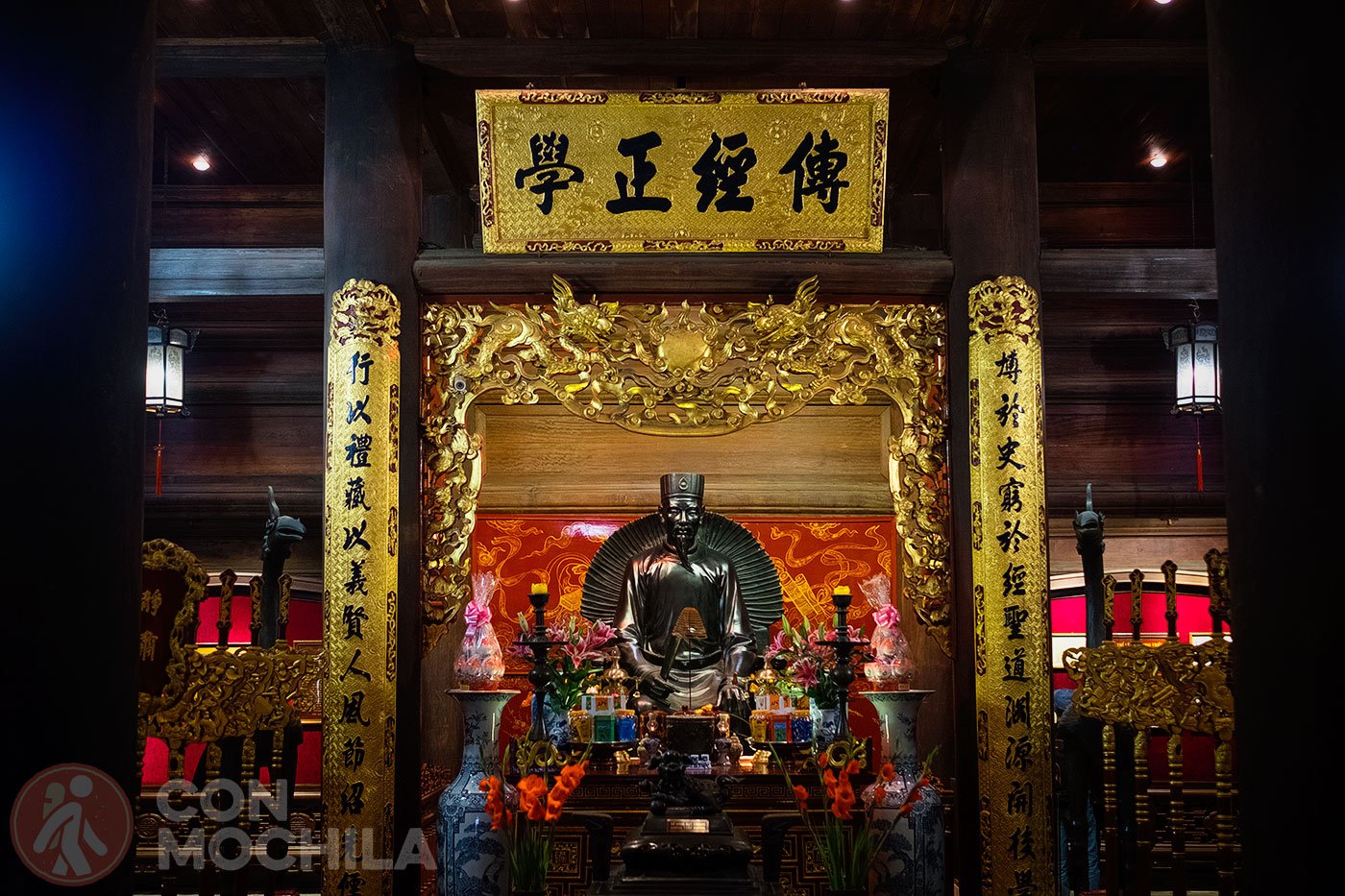
The rear building has two levels. The ground floor houses a statue of Chu Văn An (the rector of the academy) and exhibits related to the Temple of Literature and Confucian education in Vietnam.
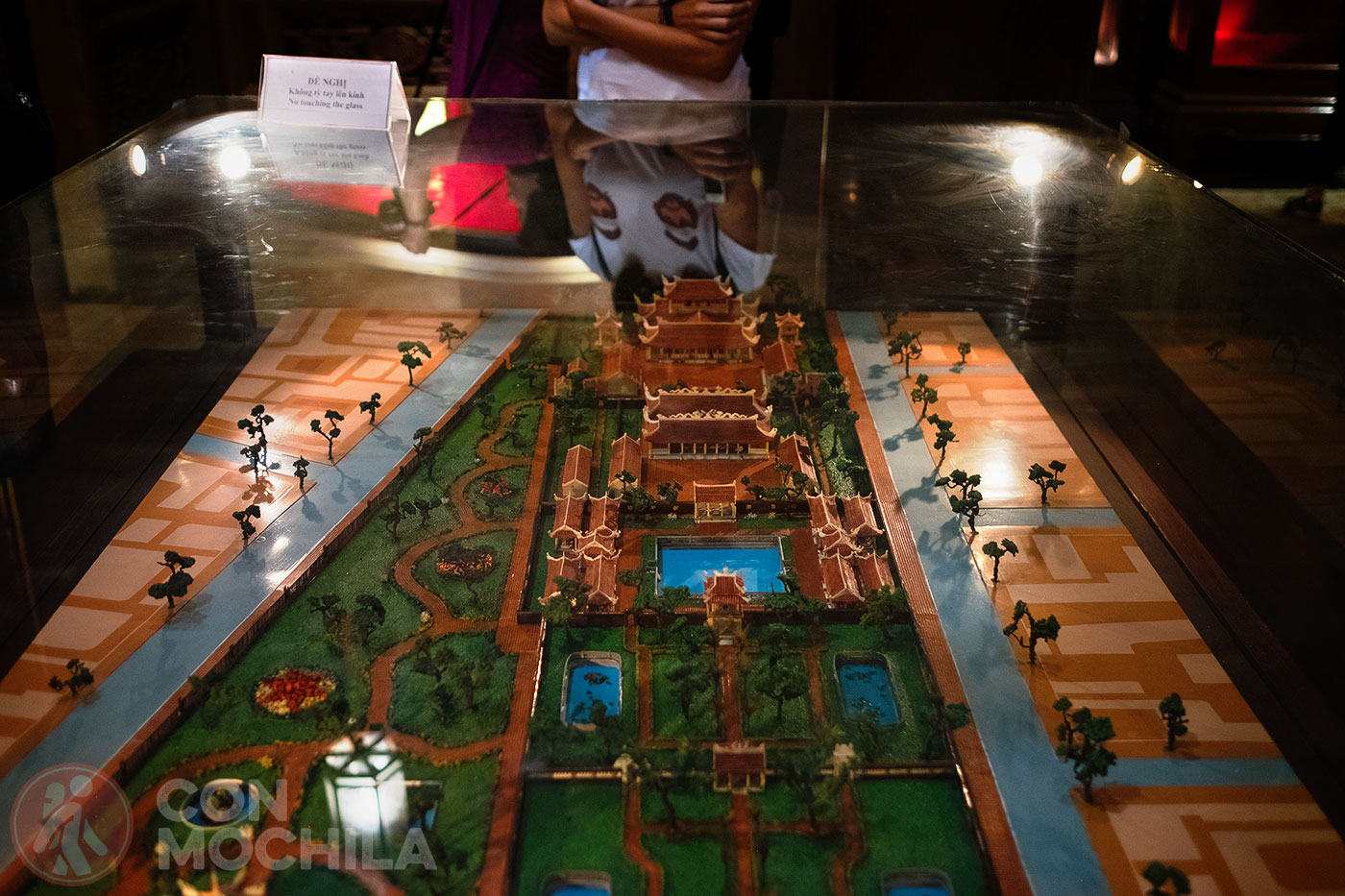
The upper floor is dedicated to the three monarchs who played a key role in establishing the Temple of Literature and the Imperial Academy: Lý Thánh Tông, Lý Nhân Tông, Lê Thánh Tông. Their statues are displayed here in their honor.
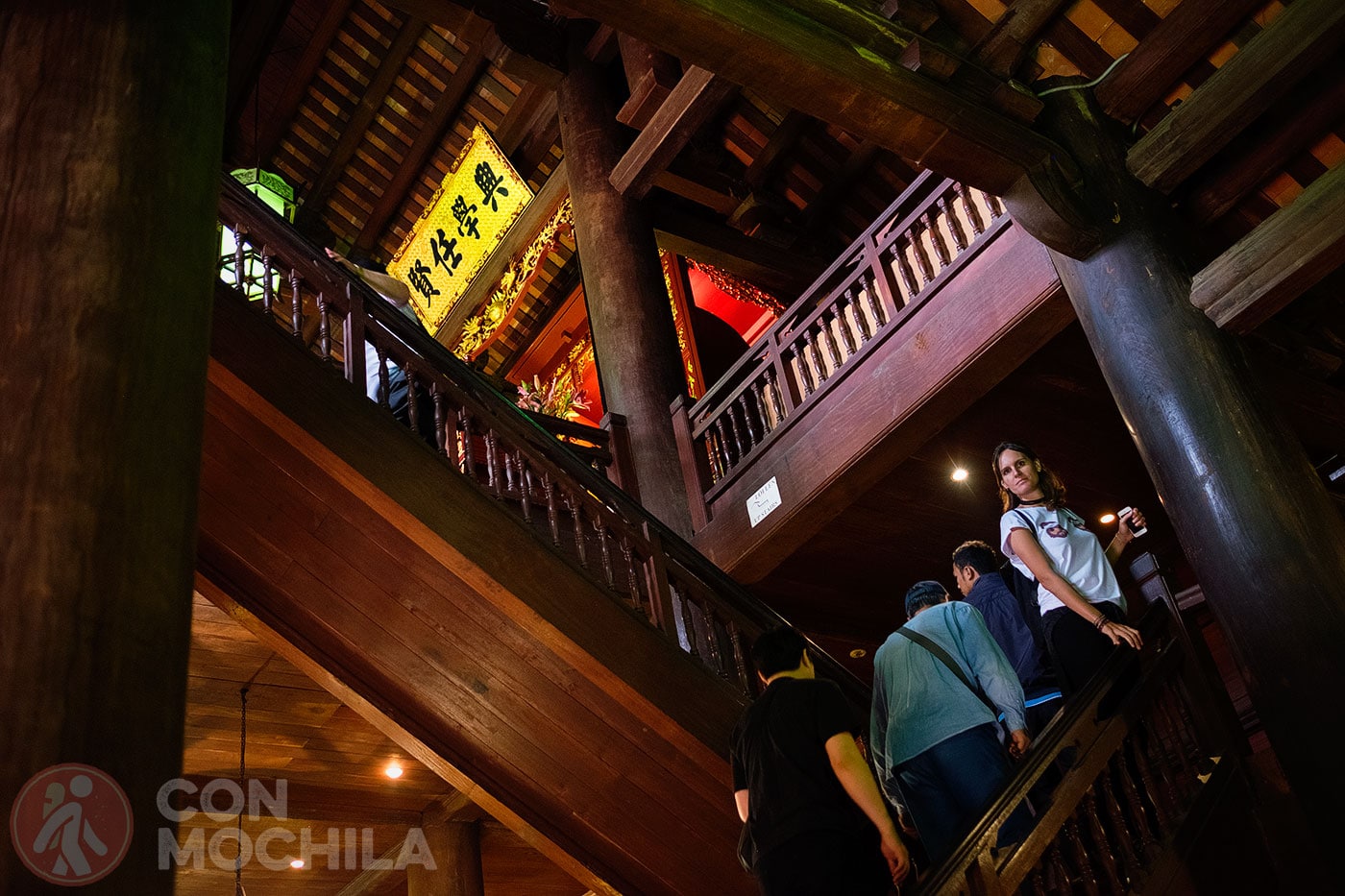
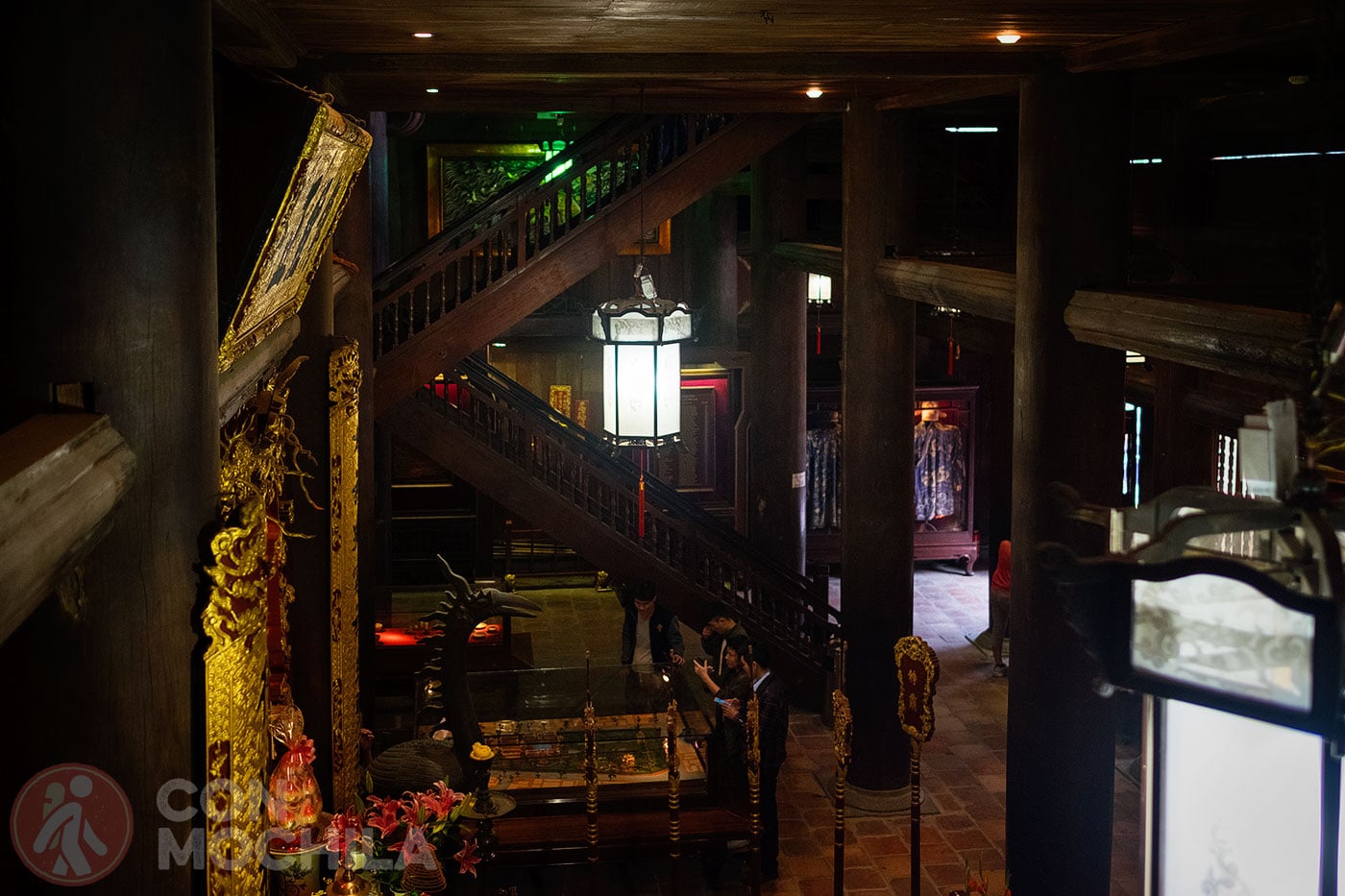
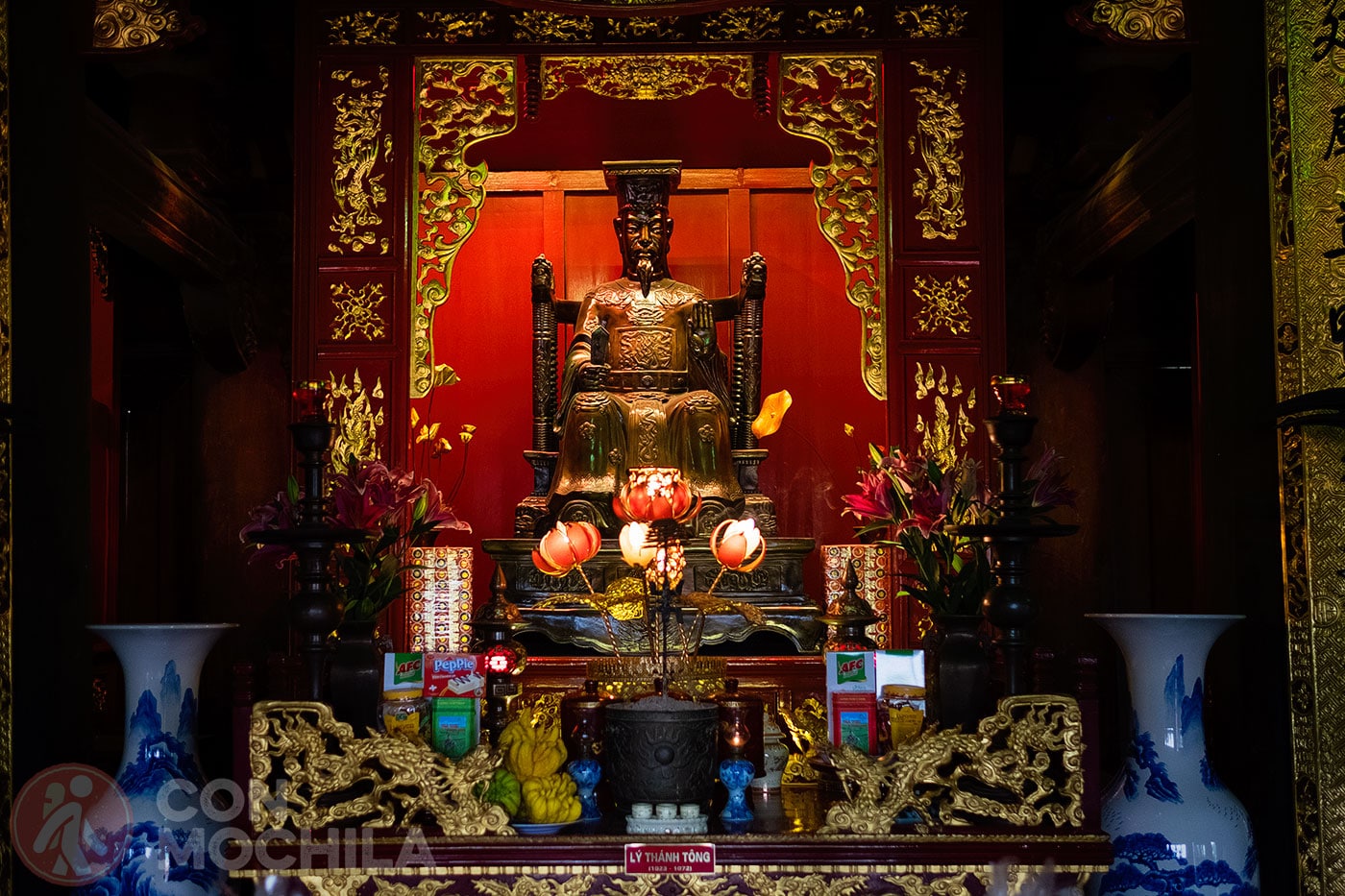
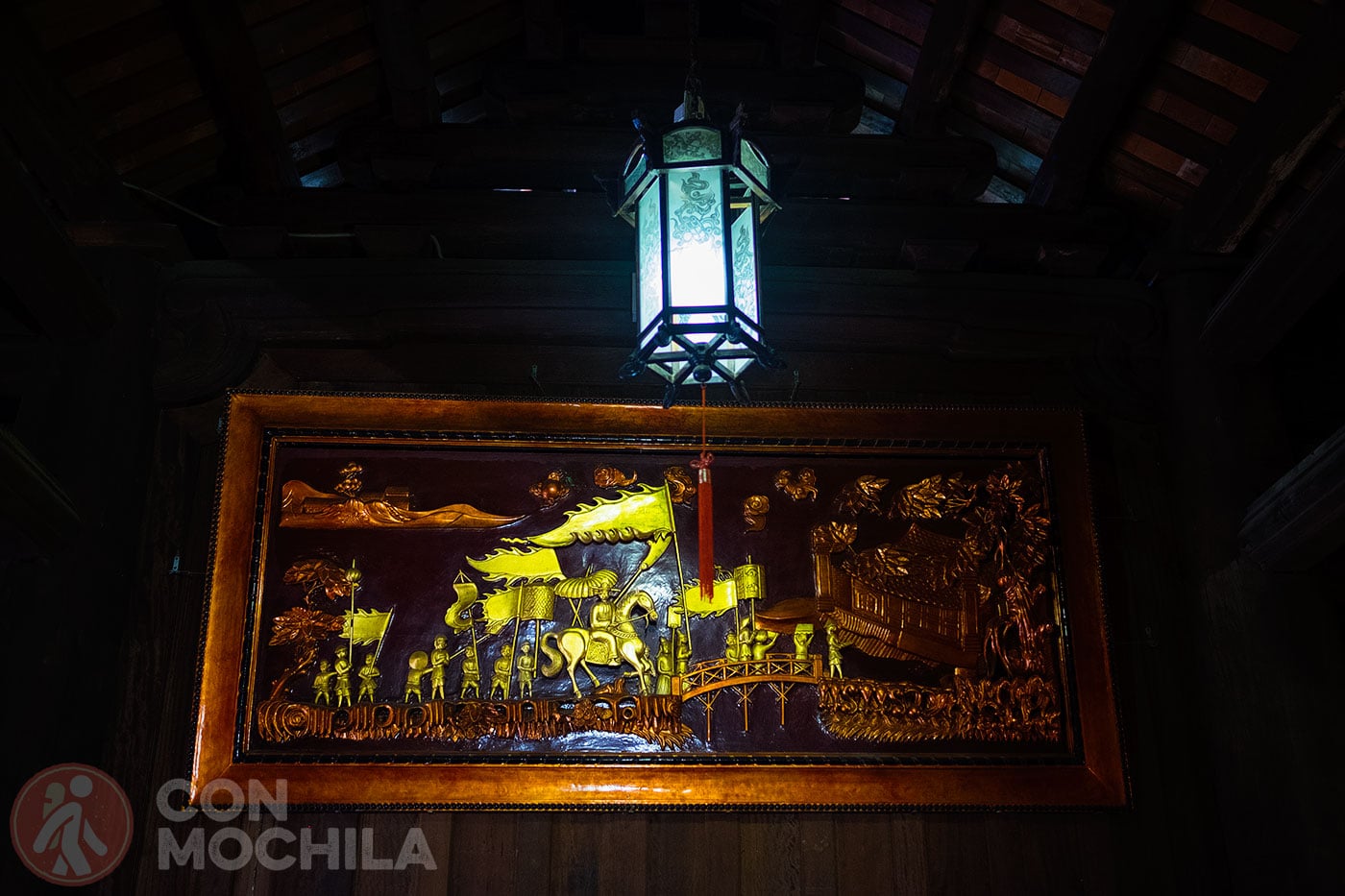
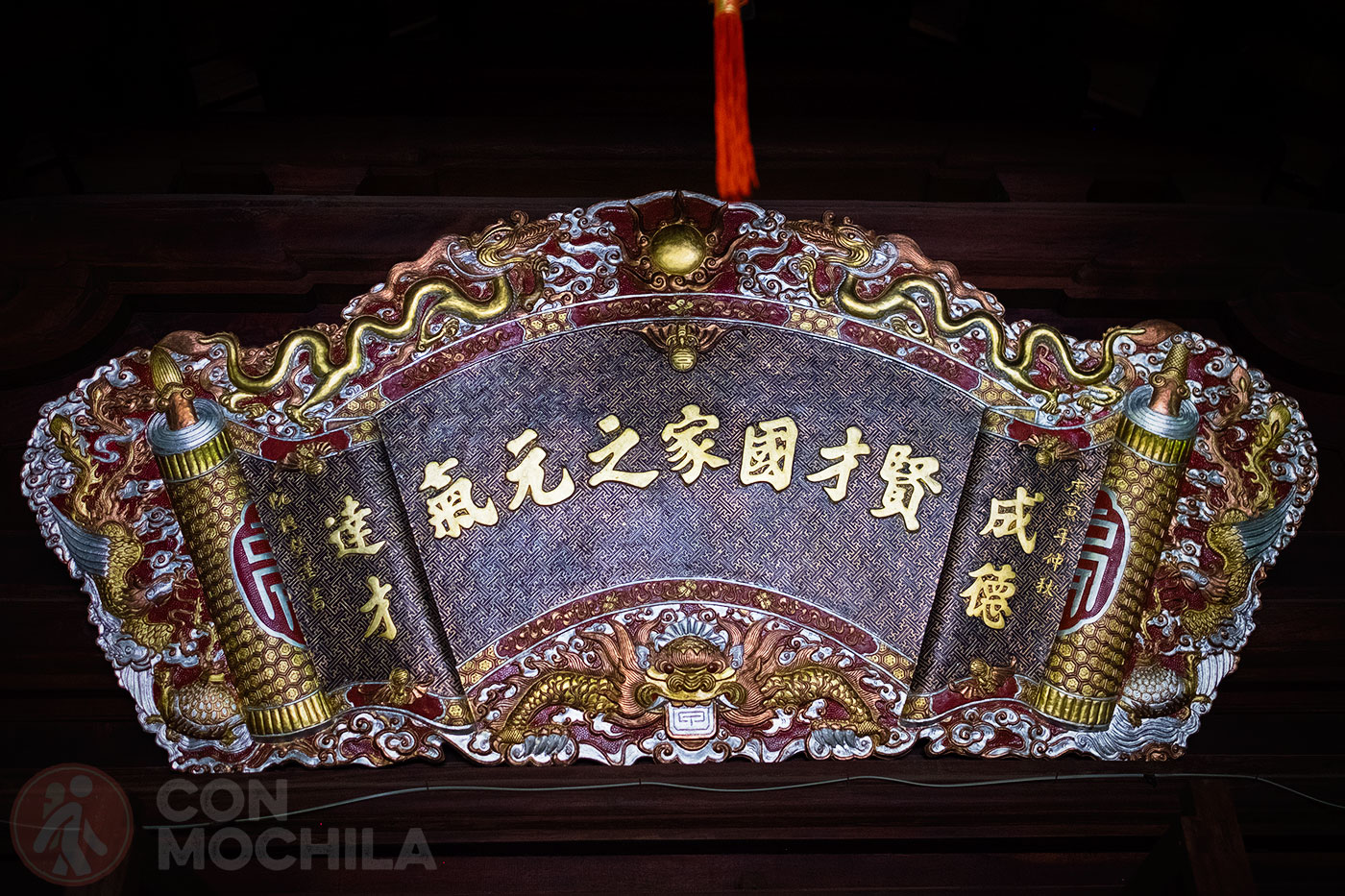
On either side of the rear building, two square structures house a drum and a bronze bell, both cast in 2000.
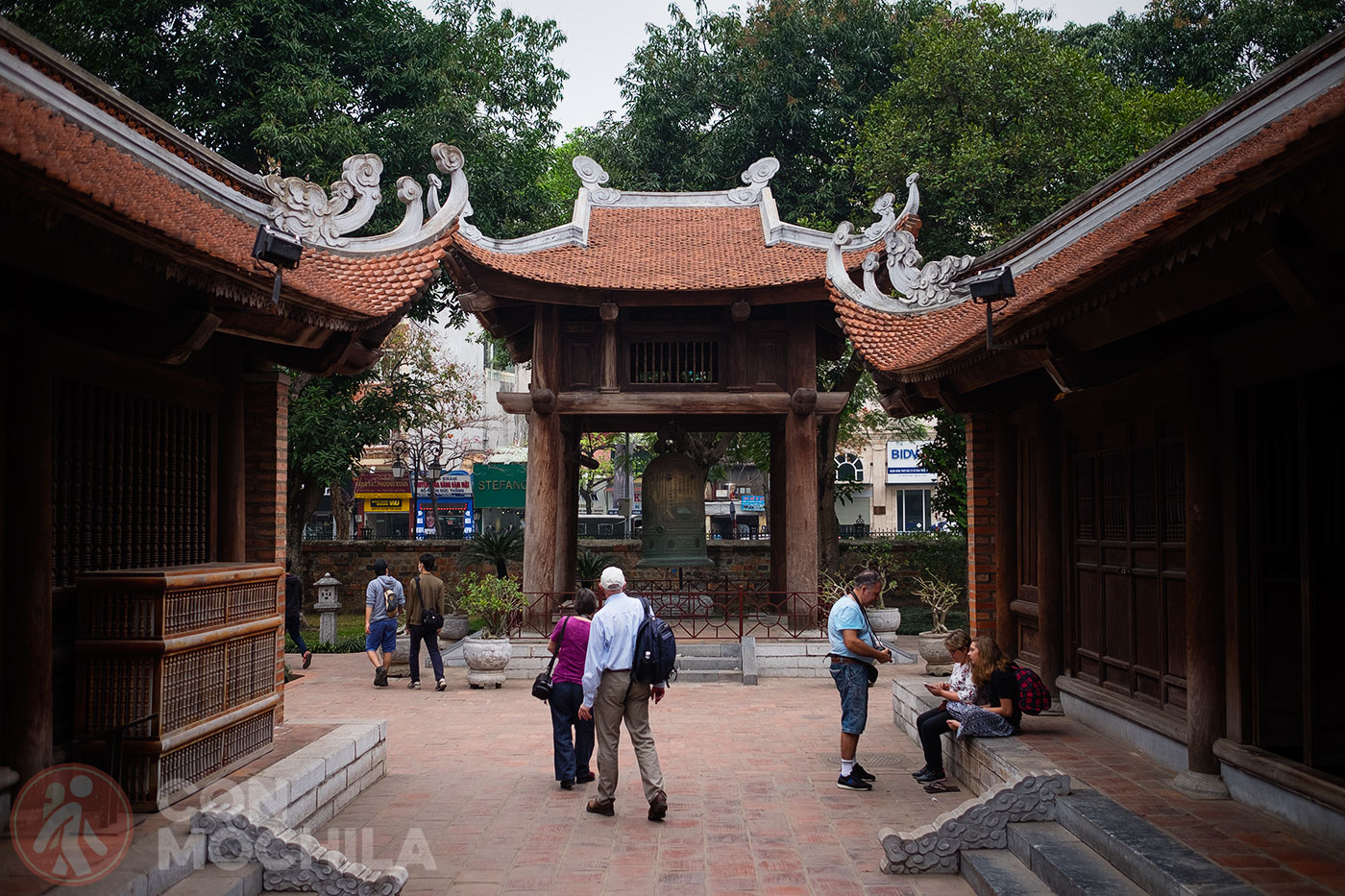
There are also small souvenir shops within the temple grounds, where visitors can purchase memorabilia inspired by the temple.
